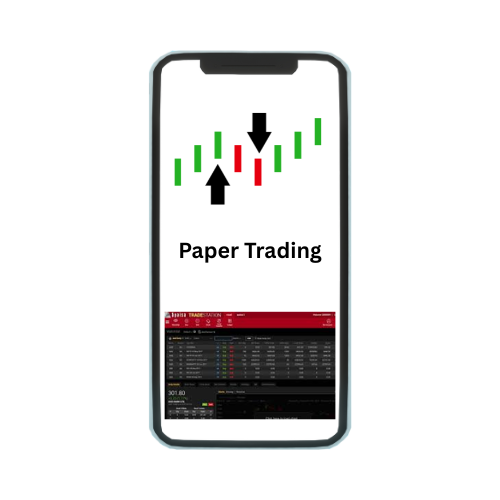Derived demand is a concept in economics that describes the demand for a particular good or service that arises as a result of the demand for another good or service. This secondary demand occurs when the demand for one product influences the demand for another related product. Essentially, derived demand reflects the interdependence of goods and services in the production process and consumer markets. For instance, the demand for raw materials such as steel increases when there is a high demand for automobiles. Similarly, the demand for smartphones leads to an increased demand for mobile data services. Understanding derived demand is crucial as it impacts market dynamics, economic growth, and employment levels. By comprehending the underlying factors and strategies associated with derived demand, businesses can effectively anticipate market trends and optimize their production and marketing strategies to capitalize on these relationships.
What Is Derived Demand?
Derived demand refers to the demand for a good or service that arises not from its own intrinsic value or usefulness, but from the demand for another good or service to which it contributes. In other words, the demand for one product or service is driven by the demand for another related product or service. For example, the demand for steel is derived from the demand for automobiles, construction, and other industries that use steel as a raw material. Similarly, the demand for computer chips is derived from the demand for computers and electronic devices. Derived demand is important because it illustrates how the interconnectedness of industries can impact economic activity and production decisions across different sectors.
Types Of Derived Demand
Derived demand can be categorized into several types, each illustrating different relationships between goods and services:
- Complementary Derived Demand: This type of derived demand occurs when the demand for one good is closely linked to the demand for another related good. For example, the demand for tires is derived from the demand for automobiles. As the demand for automobiles increases, so does the demand for tires.
- Joint Derived Demand: Joint derived demand happens when the demand for a product or service is derived from the demand for two or more other products or services. An example is the demand for leather, which is derived from the demand for both shoes and handbags.
- Competitive Derived Demand: Competitive derived demand occurs when the demand for one good competes with the demand for another. For example, the demand for alternative energy sources (like solar power) is derived from the demand for traditional energy sources (like oil and coal).
Derived Demand Effect On The Economy
Derived demand plays a significant role in shaping the economy by influencing production, pricing, and resource allocation across various industries. Here are some key points to consider for the finance dictionary:
- Interconnected Industries: Derived demand highlights the interconnectedness of different industries within an economy. For instance, the demand for steel is derived from industries such as construction, automotive, and manufacturing. Changes in demand for these end products directly impact the demand for steel, influencing its production levels and pricing.
- Economic Multiplier Effect: Derived demand can have a multiplier effect on economic activity. An increase in demand for one product can lead to increased production and employment in related industries. For example, increased demand for automobiles not only boosts the automotive sector but also benefits industries supplying parts, components, and raw materials like steel, glass, and plastics.
- Supply Chain Impacts: Derived demand affects the entire supply chain. Businesses must anticipate changes in demand for their products based on demand changes in the products they supply. This can lead to adjustments in inventory levels, production schedules, and procurement strategies.
- Investment and Capital Allocation: Understanding derived demand is crucial for making informed investment and capital allocation decisions. Businesses and investors need to assess the potential impact of changes in derived demand on the profitability and growth prospects of industries and companies.
- Policy Implications: Policymakers use insights into derived demand to formulate economic policies. For example, promoting infrastructure development can stimulate demand for construction materials, leading to broader economic benefits.
- Global Trade Dynamics: Derived demand also influences global trade dynamics. Countries with abundant natural resources or advanced manufacturing capabilities may benefit from exporting goods that are in high demand globally due to derived demand.
Strategies Of Derived Demand
Strategies related to derived demand focus on understanding and leveraging the interconnected relationships between goods and services to optimize production, pricing, and resource allocation. Here are key strategies for the finance dictionary:
- Market Forecasting: Businesses must forecast demand for their products by analyzing the derived demand for related goods. For example, a steel manufacturer might analyze trends in automotive and construction industries to predict future demand for steel.
- Supply Chain Management: Effective supply chain management is crucial for responding to changes in derived demand. Businesses should establish robust relationships with suppliers and distributors to ensure timely access to raw materials and components.
- Product Diversification: Diversifying product offerings can mitigate risks associated with derived demand. Companies can expand their product lines to serve multiple industries, reducing dependency on any single market.
- Flexibility in Production: Flexible production processes allow businesses to adjust output in response to changes in derived demand. This agility helps in optimizing resource utilization and reducing costs.
- Strategic Partnerships: Collaborating with partners in related industries can provide insights into emerging trends and opportunities. For instance, a semiconductor manufacturer might partner with electronics companies to align production with demand for consumer electronics.
Factors Influencing Derived Demand
Factors influencing derived demand are critical for understanding how demand for one product or service is shaped by the demand for another related product or service. Here are key factors to consider for the finance dictionary:
- End-Product Demand: The most significant factor influencing derived demand is the demand for the final product or service that utilizes the derived product as an input. For example, the demand for steel is heavily influenced by the demand for automobiles, construction, and machinery.
- Substitute Goods: The availability and price of substitute goods can impact derived demand. For instance, the demand for renewable energy sources like solar panels is influenced by the price and availability of traditional energy sources such as coal and oil.
- Complementary Goods: Goods that are used together can influence each other’s demand. For example, the demand for computer hardware components is influenced by the demand for software and applications.
- Technological Advances: Advances in technology can influence derived demand by changing the characteristics and efficiency of products. For instance, advancements in battery technology have increased the demand for lithium and other raw materials used in batteries for electric vehicles and renewable energy storage.
- Economic Conditions: Economic factors such as GDP growth, interest rates, and consumer confidence can significantly impact derived demand. For example, during periods of economic expansion, the demand for housing and automobiles tends to increase, driving up the demand for construction materials and steel.
- Seasonal and Cyclical Trends: Seasonal and cyclical fluctuations in demand for end-products can lead to corresponding changes in derived demand. For example, the demand for agricultural fertilizers is influenced by seasonal planting cycles and agricultural output.
- Government Policies and Regulations: Government policies and regulations can impact derived demand through incentives, subsidies, and mandates. For example, environmental regulations promoting renewable energy can increase the demand for solar panels and wind turbines.
- Global Trade and Supply Chain Dynamics: Global trade patterns and supply chain dynamics influence derived demand by affecting the availability and cost of raw materials and components. For instance, disruptions in global supply chains can impact the availability of critical inputs, influencing derived demand across industries.
Exception To Derived Demand
Exceptions to derived demand refer to situations where the demand for a product or service is not directly influenced by the demand for another related product or service. Here are some key exceptions to derived demand for the finance dictionary:
- Unique Products: Products that are highly specialized or unique may not have a direct derived demand relationship. For example, custom-made luxury goods or highly specialized industrial equipment may not be directly tied to the demand for other products.
- Inelastic Demand: Inelastic demand occurs when changes in the price or demand for one product do not significantly impact the demand for another product. For instance, demand for essential goods like food and medicine tends to be less affected by changes in the demand for other products.
- Standalone Products: Some products have standalone demand because they are not inputs into another production process. For example, art pieces, collectibles, and certain services like legal consulting or entertainment are not derived from the demand for other products.
- Niche Markets: Products that serve niche markets or have a limited customer base may not exhibit derived demand. For instance, specialized medical equipment used in rare procedures may not be subject to derived demand pressures.
- Seasonal or Unique Demand: Products that have a unique or seasonal demand pattern may not be directly influenced by the demand for other products. For example, holiday-specific goods or seasonal fashion items may have independent demand cycles.
- Government Mandates or Subsidies: Sometimes, government mandates or subsidies can create demand for products that is not derived from the demand for other products. For instance, subsidies for electric vehicles can create demand for batteries and charging infrastructure independent of traditional automotive demand.
- Technological Advances: Products that are based on new or emerging technologies may not have a direct derived demand relationship initially. For example, new types of consumer electronics or advanced medical devices may create their own demand without being tied to existing product categories.
Conclusion
In conclusion, derived demand is a fundamental economic concept that illustrates the interconnectedness of industries and products within an economy. It highlights how the demand for one product or service can be driven by the demand for another related product or service. Understanding derived demand is crucial for businesses, policymakers, and investors as it allows them to anticipate changes in market conditions, optimize production and resource allocation, and make informed decisions about pricing and investment strategies. While derived demand typically explains the majority of demand relationships in the economy, exceptions exist, such as unique products, inelastic goods, and standalone services, which do not follow this pattern. These exceptions underline the complexity and diversity of market dynamics. Overall, a comprehensive understanding of derived demand is essential for navigating the complexities of modern economies and maximizing opportunities for growth and efficiency.





